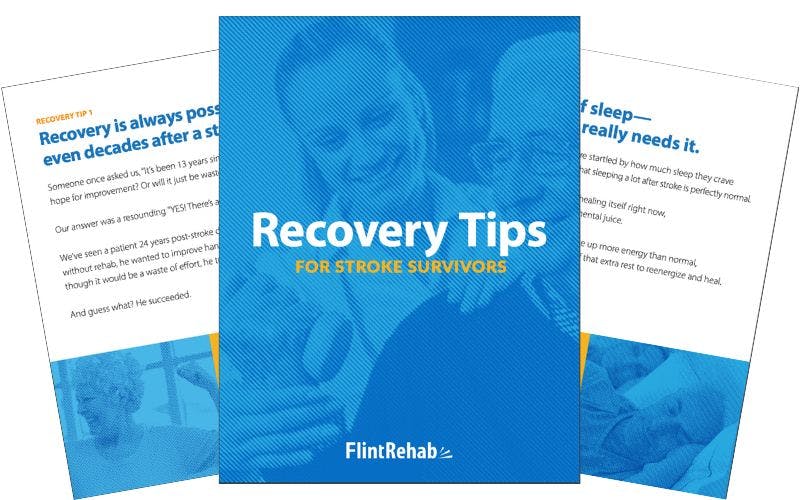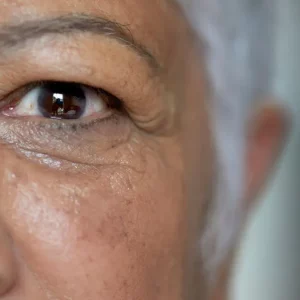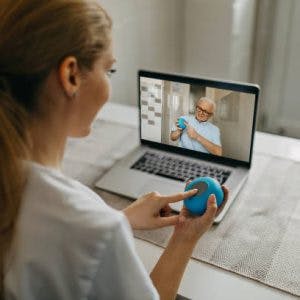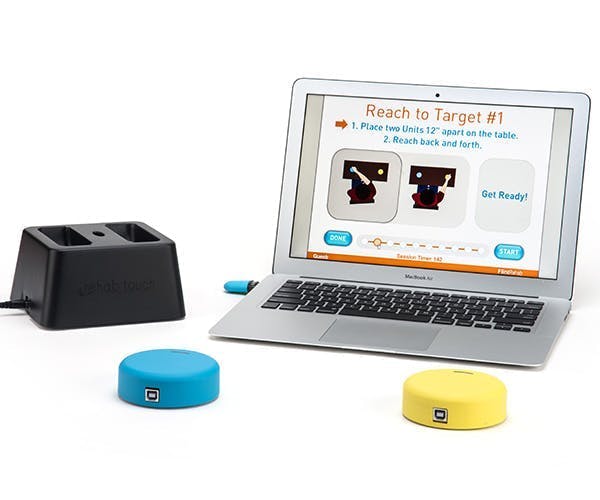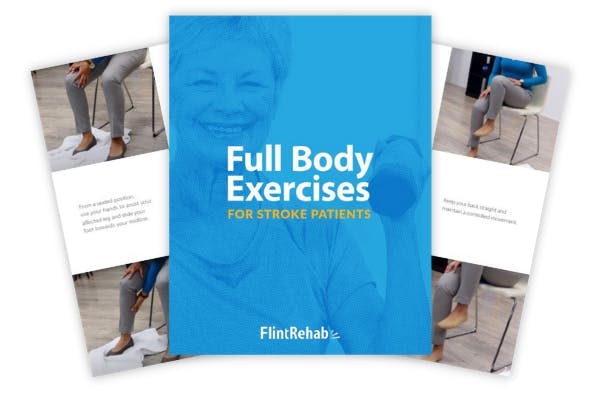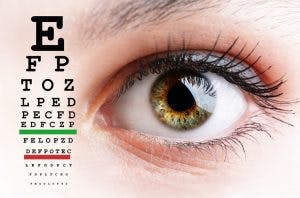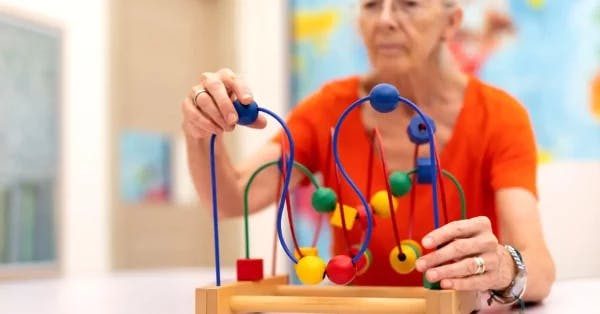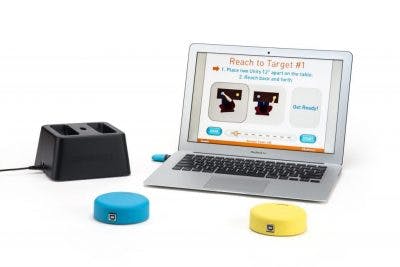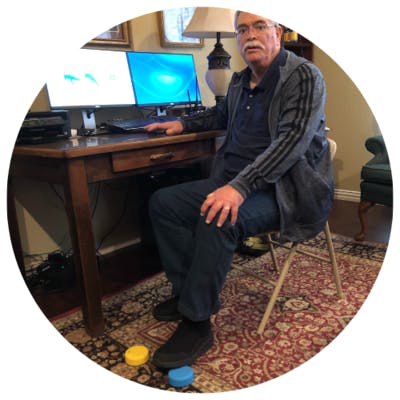A stroke can have a big impact on various aspects of a person’s life, including their personality. While a stroke in either hemisphere of the brain may result in personality changes, certain traits are more likely to be affected depending on which side of the brain sustained damage. Therefore, when a stroke occurs in the left hemisphere of the brain, the changes can be particularly distinct due to the specialized functions controlled by this area. Understanding potential personality changes associated with a left brain stroke can help caregivers, family members, and stroke survivors navigate the recovery process more effectively.
In this article we will look at left brain stroke personality changes as well tips from a therapist on how to monitor and deal with them throughout recovery!
Understanding Left Brain Functions
The left hemisphere of the brain is typically responsible for language, logic, analytical thinking, and mathematical abilities. It also controls the right side of the body. A stroke in this region can disrupt these functions, leading to physical, cognitive and behavioral changes.
Key Functions of the Left Hemisphere
- Language and Speech: Includes speaking, understanding language, reading, and writing. Of note, although language skills are housed in the left hemisphere for the vast majority of people, the right hemisphere is responsible for language in a small percentage of people, more commonly those who are left-handed.
- Analytical Thinking: Involves problem-solving, reasoning, and critical thinking.
- Mathematical Skills: Handles numbers, calculations, and logical sequencing.
- Motor Control: Regulates movements on the right side of the body.
When these areas are affected by a stroke, the resulting deficits can manifest not only as physical or cognitive impairments but also as noticeable personality changes.
Common Personality Changes After a Left Brain Stroke
Personality changes following a left brain stroke can vary widely, depending on the severity and specific location of the stroke. Some of the most commonly observed changes include:
1. Increased Cautiousness and Anxiety
Many individuals become more cautious, hesitant, or even anxious after a left brain stroke. This can be due to difficulties with problem-solving and decision-making, leading to a lack of confidence in their abilities. They may avoid situations where they feel uncertain or overwhelmed.
2. Depression and Emotional Lability
Depression is common among stroke survivors, particularly those with left hemisphere damage. Emotional lability, characterized by rapid and exaggerated mood changes, can also occur. Individuals might cry or laugh inappropriately without a clear trigger, which can be confusing for both the survivor and their loved ones.
3. Frustration and Irritability
Struggling with communication difficulties, such as aphasia, can lead to significant frustration. Individuals may become easily irritated, especially when they cannot express their thoughts or understand others as they once did.
4. Reduced Initiative and Apathy
Some stroke survivors may show a lack of motivation or interest in activities they previously enjoyed. This apathy is not necessarily a sign of laziness but rather a neurological consequence of the stroke, making it difficult to initiate tasks or engage with others.
5. Changes in Social Behavior
Alterations in social behavior can include being less talkative, more withdrawn, or conversely, more impulsive. Some individuals may struggle to pick up on social cues, leading to inappropriate comments or actions in social settings. Individuals with language difficulties such as aphasia may have a particularly difficult time engaging socially.
Factors Influencing Personality Changes
Several factors influence the extent and nature of personality changes after a left brain stroke:
1. Location and Severity of the Stroke
Since each specific area of the brain has a distinct function, unique changes may occur depending on which particular area of the left hemisphere was affected . For example, damage to the frontal lobe can impact decision-making, impulse control, and emotional regulation, while damage to the parietal lobe may affect spatial awareness and perception.
2. Pre-Stroke Personality
A person’s personality before the stroke can also influence post-stroke changes. Some traits may become exaggerated, while others might diminish. For instance, someone who was naturally cautious might become even more so after a stroke.
3. Support System and Environment
The level of support from family, friends, and healthcare providers can significantly impact a stroke survivor’s emotional well-being and adjustment to life after stroke. A nurturing environment can help mitigate some of the negative effects, including undesirable personality changes.
4. Cognitive and Physical Impairments
The presence of additional cognitive or physical impairments can compound personality changes. For example, difficulty with mobility or communication can lead to frustration, isolation, and mood disturbances.
Coping Strategies for Personality Changes
While personality changes after a left brain stroke can be challenging, there are strategies that can help both survivors and caregivers manage these changes effectively.
1. Professional Support
Seeking professional support can be a critical first step in addressing personality changes. Experts in stroke recovery can offer therapies tailored to the individual’s needs.
- Neuropsychological Therapy: Working with a neuropsychologist can help address emotional and behavioral changes through targeted therapies.
- Speech and Language Therapy: This can improve cognitive functions and communication skills, reducing frustration and enhancing social interactions.
- Occupational Therapy: Helps individuals regain independence in daily activities, boosting confidence and reducing apathy.
2. Emotional and Psychological Support
Addressing emotional well-being is just as important as physical recovery. Emotional and psychological support can help individuals and their family members process their experiences and build resilience.
- Counseling and Psychotherapy: Individual or group therapy can provide a safe space to process emotions and develop coping mechanisms.
- Support Groups: Connecting with others who have experienced similar challenges can be incredibly validating and supportive.
3. Family and Caregiver Involvement
Family members and caregivers play a vital role in the recovery journey. Their support can make a significant difference in managing personality changes.
- Education and Training: Understanding the nature of personality changes can help caregivers respond with empathy and patience.
- Consistent Routines: Establishing predictable routines can provide a sense of security and reduce anxiety.
- Positive Reinforcement: Encouraging and celebrating small achievements can boost morale and motivation.
- Practice Self-Care: Regularly participating in self-care activities, such as journaling, mindfulness exercises, or yoga, can improve emotional wellness for survivors and their family members.
4. Medication
In some cases, medication may be necessary to manage mood disorders or emotional instability. Consulting with healthcare providers ensures the safest and most effective approach.
In some cases, medication may be prescribed to manage symptoms such as depression, anxiety, or emotional lability. It’s important to work closely with healthcare providers to find the most effective treatment plan.
When to Seek Help
It’s important to recognize when personality changes may require professional intervention. Seek help if:
- Changes are severe and significantly impact daily functioning.
- The individual shows signs of depression, such as persistent sadness, hopelessness, or thoughts of self-harm.
- There are safety concerns due to impulsive or aggressive behavior.
Early intervention can make a significant difference in recovery and quality of life.
Dealing With Personality Changes After Left Brain Stroke
Personality changes after a left brain stroke are common and can be distressing for both survivors and their loved ones. However, understanding these changes, seeking appropriate support, and implementing effective coping strategies can help manage the challenges.
With time, patience, and the right resources, many individuals can adapt to these changes and continue to lead fulfilling lives.



